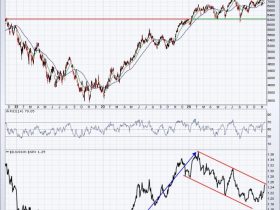ASML Lowers 2025 Guidance Triggering Chip Stock Losses
Chip stocks have taken a hit after ASML lowered its 2025 guidance, signaling potential challenges ahead for the semiconductor industry. ASML, a key player in the production of lithography machines that are crucial for semiconductor manufacturing, announced a downward revision of its long-term financial targets.
The Impact on ASML
ASML’s decision to lower its 2025 guidance has had a significant impact on the company’s stock price, as investors reacted to the news. The Dutch semiconductor equipment supplier is a pivotal player in the industry, providing critical tools for the production of advanced chips. ASML’s downward revision of its financial targets may indicate concerns about future demand for its products or competitive pressures within the market.
Market Reaction
The news of ASML’s lowered guidance has reverberated across the chip sector, leading to losses in several semiconductor stocks. The semiconductor industry is highly interdependent, with companies like ASML playing a key role in the supply chain. Any challenges faced by a major player like ASML can have a ripple effect throughout the industry.
Investor Sentiment
Investors are closely monitoring the developments in the semiconductor industry, as it is a key driver of global technological advancement. The lowering of ASML’s 2025 guidance has raised concerns about the future trajectory of the industry and the broader market. Investor sentiment towards chip stocks may be influenced by the perceived health of key players like ASML.
Long-Term Implications
The implications of ASML’s lowered guidance extend beyond its own financial performance. The semiconductor industry is a critical component of various sectors, including technology, telecommunications, and automotive. Any challenges faced by leading semiconductor equipment suppliers like ASML could potentially impact the broader economy and technological innovation.
Challenges Ahead
ASML’s decision to lower its 2025 guidance underscores the challenges facing the semiconductor industry. Rapid technological advancements, changing market dynamics, and global supply chain disruptions are among the factors that could affect the future growth of the industry. Companies in the chip sector will need to navigate these challenges strategically to maintain their competitive edge.
Conclusion
In conclusion, ASML’s announcement of a downward revision in its 2025 guidance has sent ripples through the semiconductor industry, leading to losses in chip stocks. The long-term implications of this development remain to be seen, but it highlights the challenges facing the industry. Moving forward, companies in the semiconductor sector will need to adapt to a rapidly evolving landscape to ensure their continued success.













